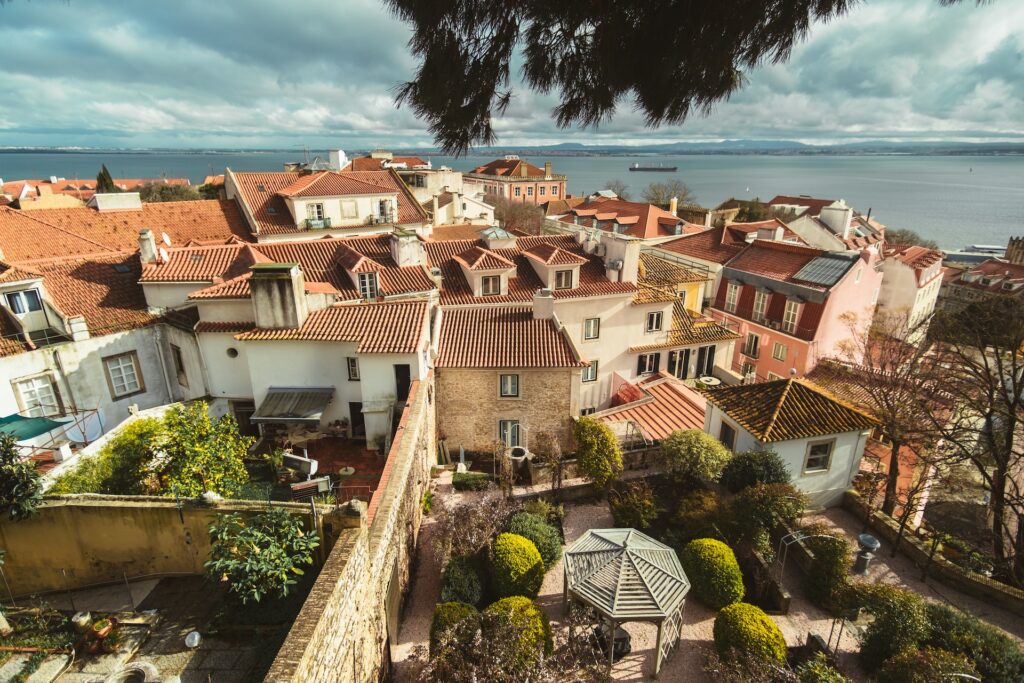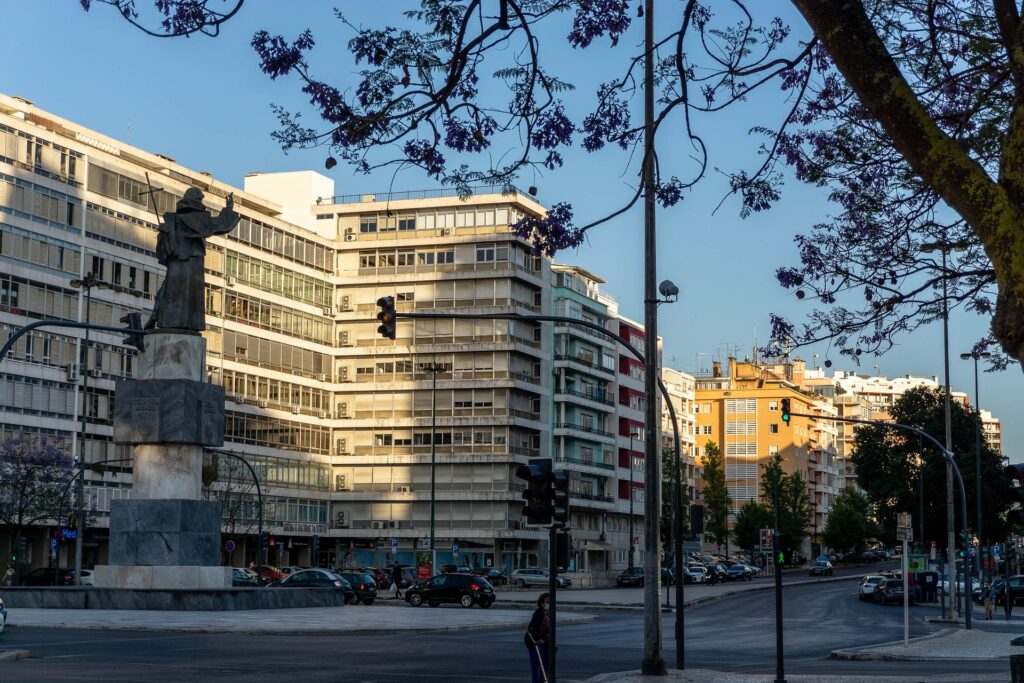Relocating to Portugal is a dream for many, and the beautiful city of Lisbon is often at the top of the list for expats looking to make the move. With its stunning architecture, bustling culture, and laid-back lifestyle, it’s easy to see why Lisbon is a popular choice.
But with so many neighborhoods to choose from, it can be overwhelming to decide where to start your search for the perfect place to call home. In this article, we’ll take a deep dive into the best neighborhoods to live in Lisbon for foreigners, taking into account factors such as accessibility, affordability, and overall quality of life.
Whether you’re looking to immerse yourself in the city’s history, enjoy the nightlife, or simply soak up the sun, we’ve got you covered with the top spots to consider.
Why has Lisbon become so popular among expats?
Lisbon has become increasingly popular among expats in recent years for several reasons. One factor is the city’s relatively low cost of living, which is more affordable than many other major European cities. According to Pordata, Lisbon has a population of 2,884,170 with 343,995 foreigner residents, making up 11.9% of the total population.
The city’s warm climate, stunning natural beauty, and rich cultural history are also major draws for expats. Lisbon is known for its beautiful architecture, charming neighborhoods, and delicious cuisine, which all contribute to its unique and appealing character.
The access to the excellent healthcare services and to a beneficial tax regime also have been attracting retirees through the D7 Visa Portugal.
Another factor that has contributed to Lisbon’s popularity among expats is the city’s growing economy and job opportunities. The D2 Visa, also known as entrepreneur Visa has made it possible for foreign investors contributing to the growth of the Portuguese economy.
For expat families living in Lisbon, there are several international schools available that provide education in English and follow recognized curriculums such as the International Baccalaureate (IB) or the British curriculum.
The historic neighborhoods in Lisbon
Alfama
Alfama, the oldest neighborhood in Lisbon, is a charming and historic district that exudes authenticity. It’s a labyrinth of narrow, winding streets and alleys, adorned with colorful tiles and vibrant bougainvillea.
As an expat, living in Alfama offers an immersive experience in Portuguese culture and traditions. You’ll find Fado music echoing from the local taverns, and the iconic São Jorge Castle towering over the city.
The neighborhood’s proximity to the Tagus River means you can enjoy picturesque walks along the waterfront, offering stunning views of the city and the Atlantic Ocean. While Alfama is known for its quaint beauty, it can be quite hilly and lacks the modern amenities found in other parts of the city.
Pros of living in Alfama
- Historic and picturesque with charming narrow streets and historic buildings.
- Authentic Portuguese atmosphere with Fado music and local markets.
- Proximity to the river and stunning viewpoints.
Cons of living in Alfama
- Can be quite hilly and lacks modern amenities.
- Crowded with tourists, especially during the peak tourist season.
- Limited parking and challenging for car owners.

Graça
Graça, perched on one of Lisbon’s seven hills, offers stunning panoramic views of the city and the Tagus River. It’s a neighborhood known for its relaxed atmosphere, with a mix of locals and expats creating a diverse and welcoming community.
You can enjoy leisurely walks through its winding streets, discovering local cafes, and charming squares. Graça is home to the famous Miradouro da Senhora do Monte, one of the best viewpoints in Lisbon.
You’ll find a blend of traditional and modern living here, with a wide range of amenities and services. It’s an excellent choice for expats who appreciate a peaceful, residential vibe while still being well-connected to the heart of Lisbon.
Pros of living in Graça
- Beautiful panoramic views of the city.
- Relaxed and welcoming community with a mix of locals and expats.
- Strong sense of tradition and culture.
Cons of living in Graça
- Hilly terrain can be challenging for walking or cycling.
- Limited nightlife and entertainment options compared to other neighborhoods.
- Less convenient for those who prefer central locations.

The trendy neighborhoods in Lisbon
Chiado
Chiado is a vibrant and upscale neighborhood that is at the heart of Lisbon’s cultural and artistic scene. It’s famous for its elegant boutiques, historic theaters, and a myriad of restaurants and cafes.
As an expat in Chiado, you’ll be surrounded by the city’s creative energy, with frequent art exhibitions and live performances. The neighborhood boasts a rich historical heritage, and you can explore the ruins of the 1755 earthquake and the renowned Bertrand Bookstore, one of the oldest in the world.
However, living in Chiado can be pricier than other areas in Lisbon, given its central location and the abundance of cultural attractions, such as São Carlos National Theater. The convenience of public transport and the bustling nightlife make it a popular choice for expats seeking a dynamic urban lifestyle.
Pros of living in Chiado
- Vibrant cultural and artistic scene with theaters, museums, and galleries.
- Trendy boutiques, restaurants, and cafes.
- Excellent public transportation connections.
Cons of living in Chiado
- High cost of living and expensive real estate.
- Crowded and touristy, particularly during the day.
- Limited green spaces and outdoor activities.

Bairro Alto
Bairro Alto, often referred to as the bohemian heart of Lisbon, is known for its lively nightlife, eclectic mix of residents, and artistic spirit. This neighborhood comes to life in the evenings, with its narrow streets filling up with people, and bars and clubs buzzing with activity.
As an expat, living in Bairro Alto can be a thrilling experience, especially if you enjoy the nightlife scene and cultural diversity. During the day, the neighborhood maintains a relaxed atmosphere, and you can explore the many street art murals and alternative shops.
However, it’s important to note that Bairro Alto can get quite noisy at night due to the nightlife, so it may not be the ideal choice for those seeking a quiet and peaceful living environment.
Pros of living in Bairro Alto
- Lively nightlife with numerous bars and clubs.
- Eclectic mix of residents and artistic spirit.
- Bohemian and vibrant atmosphere.
Cons of living in Bairro Alto
- Can get noisy at night due to nightlife.
- Limited parking and accessibility by car.
- May not be suitable for those seeking a quiet, family-friendly environment.

Principe Real
Principe Real is a trendy and cosmopolitan neighborhood in Lisbon, attracting expats seeking a combination of culture, modernity, and a laid-back atmosphere. It’s known for its lush botanical gardens and charming squares, such as Praça do Príncipe Real, which hosts a vibrant market selling artisanal goods and local produce.
As an expat in Príncipe Real, you’ll find a range of chic boutiques, restaurants, and bars, making it a great place for food and fashion enthusiasts.
The neighborhood is also known for its progressive and LGBTQ+ friendly atmosphere. While it offers a contemporary urban lifestyle, it retains a sense of community, making it a popular choice for expats who want to embrace both modernity and a sense of belonging.
Pros of living in Principe Real
- Diverse and LGBTQ+ friendly community.
- Chic boutiques, restaurants, and cultural attractions.
- Peaceful and residential with a modern twist.
Cons of living in Principe Real
- High property prices and cost of living.
- Limited public transportation options.
- May not have the same historical charm as some other neighborhoods.

The residential neighborhoods in Lisbon
Campo de Ourique
Campo de Ourique is a family-friendly and residential neighborhood that appeals to expats seeking a quieter, more tranquil lifestyle. This charming district features tree-lined streets, cozy cafes, and a local market, Mercado de Campo de Ourique, where you can savor Portuguese cuisine.
As an expat in Campo de Ourique, you’ll enjoy a strong sense of community and a slower pace of life compared to some of the city’s more bustling neighborhoods.
The area is well-connected by public transport and boasts a range of essential amenities, including schools and healthcare facilities, making it an attractive option for expat families and retirees.
Pros of living in Campo de Ourique
- Family-friendly and residential atmosphere.
- Tree-lined streets and cozy cafes.
- Local markets and accessibility to essentials.
Cons of living in Campo de Ourique
- Less cultural and entertainment options compared to other neighborhoods.
- Fewer international schools and healthcare facilities.
- Slightly removed from the city center.

Alvalade
Alvalade is a peaceful and predominantly residential neighborhood, known for its tree-lined avenues, spacious green areas, and a strong sense of community. It’s a great choice for expats who want to experience a traditional Portuguese way of life while still enjoying modern conveniences.
The Parque de Alvalade and Jardim do Campo Grande offer ample opportunities for outdoor activities and relaxation. The neighborhood is well-connected by public transportation, making it easy to access the city center and other parts of Lisbon.
While Alvalade may lack the buzz of some more central districts, it provides a calm and family-oriented environment, appealing to expats looking for a comfortable and safe place to call home.
Pros of living in Alvalade
- Peaceful and well-organized residential neighborhood.
- Green spaces, parks, and outdoor activities.
- Strong sense of community and family-friendly.
Cons of living in Alvalade
- Lack of nightlife and entertainment compared to more central areas.
- Limited cultural attractions and historical landmarks.
- Some parts of the neighborhood may feel remote.

Avenidas Novas
Avenidas Novas, also known as the New Avenues, is a modern and upscale neighborhood that combines a cosmopolitan atmosphere with well-planned urban design. It’s characterized by its wide avenues, elegant buildings, and a mix of high-end boutiques and international restaurants.
As an expat in Avenidas Novas, you’ll have access to excellent healthcare facilities, international schools, and a thriving cultural scene. The Gulbenkian Museum and Calouste Gulbenkian Park are major cultural landmarks in the area.
While living in Avenidas Novas may be on the pricier side, it provides a luxurious and convenient lifestyle in the heart of Lisbon, making it a preferred choice for expats who appreciate sophistication and modernity.
Pros of living in Avenidas Novas
- Modern and upscale living with a focus on culture and commerce.
- Well-planned urban design and accessibility.
- Excellent healthcare facilities and international schools.
Cons of living in Avenidas Novas
- High property prices and cost of living.
- Can be bustling and noisy due to its central location.
- May lack the historical charm of older neighborhoods.

Estrela
Estrela is a picturesque and tranquil neighborhood in Lisbon, known for its charming ambiance and beautiful parks. As an expat looking for a peaceful and residential atmosphere, Estrela is an excellent choice.
The centerpiece of the neighborhood is the Estrela Basilica, an impressive church with a stunning marble interior. The nearby Jardim da Estrela offers a relaxing space for leisurely walks and picnics.
Estrela is well-connected to the city center and boasts a strong sense of community, making it an ideal option for families and retirees seeking a serene and safe place to call home.
Pros of living in Estrela
- Peaceful and residential neighborhood with beautiful parks.
- Historic charm and strong sense of community.
- Safe and family-friendly environment.
Cons of living in Estrela
- Fewer cultural attractions and entertainment options.
- Limited nightlife and a quieter atmosphere.
- Slightly removed from the city center.

The waterfront neighborhoods in Lisbon
Belém
Belém is a historic and culturally rich neighborhood in Lisbon, famous for its stunning waterfront, iconic landmarks, and delicious pastries. Expats looking to immerse themselves in Portuguese history and culture will find Belém enchanting.
You can explore historic sites such as the Jerónimos Monastery and the Belém Tower, both UNESCO World Heritage Sites. The neighborhood is also home to the delectable Pastéis de Belém pastry shop, where you can savor Portugal’s iconic custard tarts.
While Belém offers a tranquil environment and beautiful river views, it’s slightly removed from the city center, which can be a pro or con depending on your preferences.
Pros of living in Belém
- Picturesque coastal town with historic landmarks.
- Beautiful sea view and marina.
- Tranquil lifestyle and strong cultural presence.
Cons of living in Belém
- Slightly removed from the city center.
- Can be touristy and crowded during peak seasons.
- Limited nightlife and entertainment options.

Parque das Nações
Parque das Nações is a modern and futuristic neighborhood built on the site of the 1998 World Exposition. It offers a contemporary urban lifestyle, with a focus on sustainability, entertainment, and commerce.
As an expat, you’ll appreciate the modern architecture, scenic waterfront, and the vast Vasco da Gama shopping center. The neighborhood is home to numerous parks, gardens, and cultural venues, including the Oceanarium, one of Europe’s largest indoor aquariums.
Parque das Nações provides a comfortable and well-organized living environment, making it a favored choice for those who enjoy a dynamic, modern lifestyle.
Pros of living in Parque das Nações
- Modern, sustainable, and well-organized neighborhood.
- Contemporary architecture, waterfront, and cultural venues.
- Ideal for those seeking a dynamic, modern lifestyle.
Cons of living in Parque das Nações
- Some areas can feel sterile or lacking in traditional charm.
- Slightly distant from the historic city center.
- Potential to be crowded during major events.

The up-and-coming neighborhoods in Lisbon
Marvila
Marvila is an up-and-coming neighborhood in Lisbon, known for its industrial charm, street art, and creative energy. Expats seeking a more affordable option with a touch of urban grit will find Marvila intriguing.
The neighborhood is gradually transforming into a hub for art studios, creative businesses, and unique street art installations. While Marvila might not have the same historical or tourist appeal as other areas, it offers an authentic, less-explored side of Lisbon.
The neighborhood’s trendy bars, restaurants, and cultural events cater to a younger crowd and those with a taste for unconventional, emerging neighborhoods.
Pros of living in Marvila
- Up-and-coming neighborhood with a creative and artistic community.
- Affordable cost of living and unique street art.
- Offers a more unconventional and authentic experience.
Cons of living in Marvila
- Some areas may still be underdeveloped.
- Limited historical landmarks and tourist attractions.
- Less accessibility to public transportation.

Intendente
Intendente is an up-and-coming neighborhood in Lisbon, known for its multicultural atmosphere and affordable cost of living. As an expat looking for an authentic and vibrant experience, Intendente offers a unique blend of Portuguese culture with influences from various other parts of the world.
The neighborhood is home to diverse restaurants, shops, and cultural events, making it a hub for artists, musicians, and creatives. While it may have a reputation for being a bit gritty, it’s also a place where you can discover hidden gems and immerse yourself in the local arts scene.
Intendente’s proximity to the city center and good public transport connections make it a convenient option for those looking for an affordable yet dynamic lifestyle in Lisbon.
Pros of living in Intendente
- Multicultural atmosphere and affordable cost of living.
- Vibrant and authentic local scene.
- Proximity to the city center and public transportation.
Cons of living in Intendente
- Perceived as somewhat gritty and less polished.
- Noise and limited green spaces in some areas.
- Some parts may lack modern amenities.

The surroundings of Lisbon
Cascais
Cascais, located just outside of Lisbon, is a charming coastal town that provides a tranquil and upscale lifestyle for expats. This picturesque seaside destination is known for its beautiful beaches, historic architecture, and a bustling marina.
Expats moving to Cascais will find a relaxed and family-friendly atmosphere, with numerous international schools and a variety of outdoor activities, including sailing and golf. The town is also renowned for its cultural events, including music festivals and art exhibitions.
While Cascais is slightly further from the city center, it offers a serene escape from the hustle and bustle of Lisbon, making it an ideal choice for expats seeking a coastal retreat.
Pros of living in Casccais
- Charming coastal town with beautiful beaches.
- Family-friendly and tranquil lifestyle.
- Excellent outdoor activities and international schools.
Cons of living in Cascais
- Further from the city center, requiring longer commutes.
- Can be touristy during the summer season.
- Limited public transportation options.

Sintra
Sintra, a UNESCO World Heritage Site, is a fairytale-like town nestled in the Sintra Mountains, offering expats a truly magical experience. Known for its colorful palaces, lush forests, and mystical landscapes, Sintra is a haven for those seeking a unique blend of history and natural beauty.
The town boasts attractions like the Palácio Nacional de Sintra and the stunning Palácio da Pena, surrounded by vast gardens and scenic viewpoints. Expats in Sintra can explore hiking trails, visit quaint cafes, and enjoy a slower pace of life.
While it’s further from the city center, the enchanting surroundings and rich history make Sintra a dreamy destination for expats looking for a peaceful and captivating place to call home.
Pros of living in Sintra
- Enchanting and fairytale-like environment with historic palaces.
- Scenic landscapes and lush forests.
- Ideal for those seeking a peaceful and captivating escape.
Cons of living in Sintra
- Commute to Lisbon city center can be time-consuming.
- Can be crowded with tourists, especially during weekends.
- Limited amenities and services compared to urban neighborhoods.
How much does it cost to buy property in Lisbon?
According to the data from Idealista, the largest online real estate platform, the average price per square meter for a property in Lisboa in January 2023 is approximately €5,116. This means that to buy an apartment with a 100 m2 in Lisboa you will need around €511,600 on average. However, this average price can vary significantly depending on the location of the property.
How much does it cost to rent in Lisbon?
According to Numbeo (as of February 2023) the cost of renting an apartment with one bedroom in the city center is around €1,200.
How can I move to Lisbon?
EU Citizens
If you intend to stay in Lisbon for more than three months, it is mandatory to apply for a registration certificate. The application can be submitted upon arrival in the country, and once approved, the certificate is valid for up to five years.
Non-EU Citizens
If you are a non-EU national planning to reside in Lisbon, you must apply for a Portuguese residency visa before your arrival. After you enter in the country, you will be required to obtain a residence permit. For Americans considering a move to Portugal, we recommend reading our comprehensive guide to learn about important considerations for moving from the US.
Portugal D7 Visa
An attractive option for many retirees or others with a steady passive income who want to avoid the high costs of living in their home country is the D7 visa, which allows for living in Lisbon.
Portugal D8 Visa
You can choose to live in Lisbon under the Digital Nomad Visa. It’s a popular route for many digital nomads and remote workers.
Portugal D2 Visa
You can live in Portugal and take advantage of a supportive ecosystem, as well as a range of qualified professionals in multiple sectors through the D2 Visa.
Why moving to Portugal with us?
Local Expertise
We know Portugal. Due to our extensive local knowledge, we believe that concentrating our services in a single country destination is the best way to give you the most thorough and useful information.
Holistic Approach
One single channel of communication for the entire process. We provide you with a comprehensive service that covers all aspects of your move, from identifying the ideal residency visa to finding your new home or helping you to settle.
Transparent Service
We recommend what’s best for you based on an extensive process experience that saves time and money to clients. Our pricing is clear and competitive, and we don’t sell services that make us more money.
Simple Process
Technology plays a very important role in our company. We minimize our clients’ involvement in paperwork. We are customers ourselves and we know how to serve you.

Frequently Asked Questions About The Best Neighborhoods For Expats to Live in Lisbon
What are the most popular neighborhoods for expats in Lisbon?
Popular neighborhoods include Alfama (historic charm), Príncipe Real (trendy and upscale), Avenidas Novas (modern and central), Cascais (suburban coastal living), and Chiado (cultural and vibrant).
Which Lisbon neighborhoods are best for families?
Avenidas Novas, Belém, and Campo de Ourique are great for families due to their spacious apartments, parks, good schools, and family-friendly amenities.
Are there luxury neighborhoods in Lisbon?
Yes, Príncipe Real, Lapa, and Chiado are among Lisbon’s most upscale areas, offering luxury apartments, elegant surroundings, and access to high-end shops and dining.
What is the most affordable neighborhood for expats in Lisbon?
Alcântara, Marvila, and parts of Penha de França are more budget-friendly compared to central Lisbon while still offering great transport connections and amenities.
Which areas in Lisbon are best for digital nomads and young professionals?
Cais do Sodré, Bairro Alto, and Príncipe Real are popular for their vibrant atmosphere, coworking spaces, coffee shops, and proximity to nightlife and cultural events.
What neighborhoods in Lisbon are ideal for retirees?
Cascais, Belém, and Campo de Ourique are ideal for retirees due to their calm environment, access to healthcare, and a relaxed lifestyle close to green spaces and amenities.
Where can I find a strong expat community in Lisbon?
Areas like Cascais, Alfama, Príncipe Real, and Estrela have a strong expat presence, with international groups, expat-friendly businesses, and social networks.
What neighborhoods are best for coastal living near Lisbon?
Parque das Nações, Cascais, Estoril, and Oeiras offer beautiful coastal living with access to beaches, walking trails, and waterfront cafes, while still being close to Lisbon’s center.
Are there neighborhoods with good public transportation connections?
Baixa, Avenida da Liberdade, and Parque das Nações are very well connected by Lisbon’s metro, buses, and trains, making it easy to get around the city and beyond.
Which neighborhoods combine history and modern living in Lisbon?
Alfama and Graça combine traditional Portuguese charm with modern amenities, offering a unique blend of history, local culture, and contemporary living options.
What visa options are available for moving to Lisbon?
Portugal offers several visa options, including the D7 Visa (for retirees or those with passive income), the Golden Visa (for investors), the D2 Visa (for entrepreneurs), and the Digital Nomad Visa (for remote workers). EU/EEA citizens can move to Lisbon without a visa.
How easy is it to find accommodation in Lisbon as a newcomer?
Finding accommodation in Lisbon can be competitive due to high demand, especially in popular neighborhoods. It’s advisable to start your search early, work with local agents, or explore online rental platforms.
Is Lisbon affordable for expats?
While Lisbon is more affordable than many Western European capitals, housing costs have risen in recent years. However, groceries, dining, and public transportation remain reasonably priced, offering good value for quality living.
How do I access healthcare in Lisbon as an expat?
Portugal has a high-quality public healthcare system accessible to residents, including expats with legal status. Private healthcare options are also available, often preferred for shorter wait times and English-speaking staff.
What are the best international schools in Lisbon?
Some of the top international schools in Lisbon include St. Julian’s School (British curriculum), Carlucci American International School of Lisbon (CAISL) (American curriculum), and Redbridge School (bilingual English-French). These schools are highly regarded for their academic standards and multicultural environments.
What curricula do international schools in Lisbon offer?
International schools in Lisbon offer a variety of curricula, including the International Baccalaureate (IB), British (IGCSE and A-Levels), American, and French systems, catering to different educational needs and preferences.




